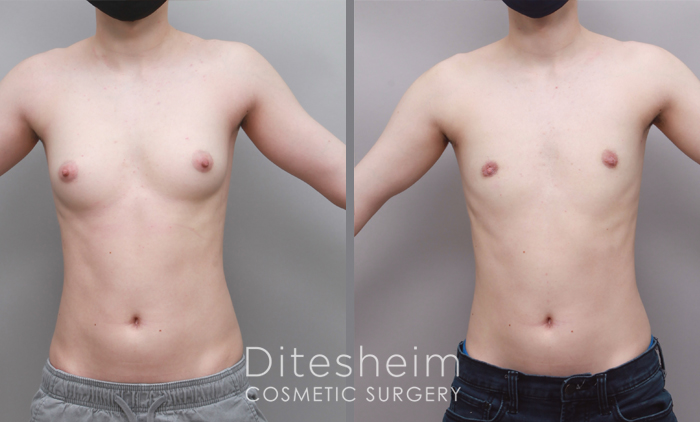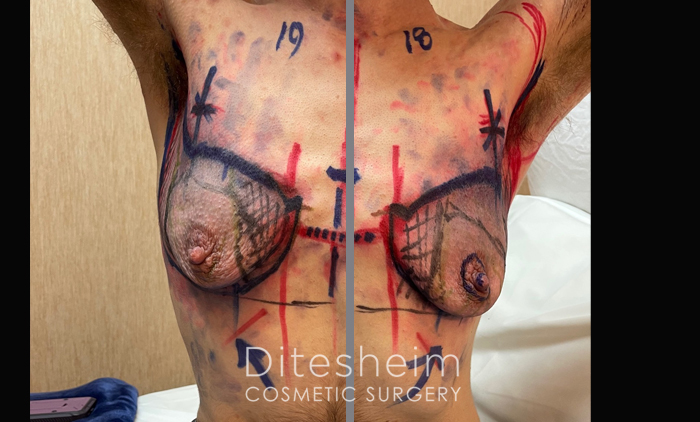- Plastic Surgery
- Liposuction
- MedSpa
- Patients Gallery
- Our Practice
- Resources
- Contact


Long-Term Emotional Benefits of Gender Confirmation Surgery
Though the primary purpose of gender affirmation surgery is to make physical changes, these procedures have significant psychological benefits. Research has shown that transgender individuals struggle with mental health conditions about four times more often than cisgender people. In most cases, the social limitations and discrimination transgender people face put them at a significantly higher risk of developing major depressive disorder and anxiety disorders.
However, patients who undergo gender affirmation procedures have significant reductions in emotional distress and other symptoms associated with severe cases of depression. Subsequently, most gender confirmation patients have a steadily declining need for mental health treatment in the years after surgery, typically reducing by eight percent each year. Additionally, transgender patients who undergo surgery report better self-confidence and body image, along with decreases in disordered eating and substance abuse.
Types of Gender Affirmation Procedures
Transgender patients have several options for transitioning with surgical procedures. We offer feminization and masculinization surgeries that can alter your facial features and chest.
Facial Feminization or Masculinization Surgery
Facial feminization surgery alters masculine characteristics to make them appear more feminine. Dr. Ditesheim does this by creating softer, rounder facial contours. Conversely, facial masculinization surgery transforms facial features by creating a masculine appearance with defined, chiseled contours.
Transfeminine Top Surgery
During the transfeminine top surgery, Dr. Ditesheim will construct breasts with silicone or saline implants, like traditional breast augmentation operations. In some cases, patients may choose to create and enhance their breasts with fat transfers for results more similar to natural breast tissue.
Transmasculine Top Surgery



16yr transmale ( 5’2 120lb, pronouns: he, him) before and after TOP surgery with periareolar approach under local anesthesia. The nipple was shortened. The scar is only at the inferior border of the areola.



20yr transmale ( preferred pronouns: ze) 5’7 132lb, before and 1 year after TOP surgery with double incision and nipple keyhole surgery ( nipple not detached). The photo with markings shows the area of breast and skin that is removed.



26yr transmale (preferred pronouns: he,him) 5’4″ 180lb before and 8 months after TOP surgery with double incision procedure with free nipple grafts.
TOP surgery is most commonly performed with either a double incision or periareolar approach. The periareolar approach is most appropriate for smaller breasts, such as an A or B cup ( see above). The breast tissue is removed with a limited incision around the areola. The skin may contract and the nipple may not need repositioning. The nipple can be shortened.
Most TOP surgery procedures will use the “double-incision” procedure. (see marking photos above) An incision is made to remove a larger amount of skin and create a scar along the lower natural border of the male chest. The nipple usually is moved to the right position as a free nipple graft. That means the nipple is detached from the chest, made smaller and then sewn back to the new position.
An alternative procedure is the Keyhole TOP surgery. Using a double incision approach, the nipple is not detached. Rather the nipple remains attached to a thin layer of breast tissue for its blood supply and is literally slid up the chest without being detached. (second pt above and pt below) The scars are placed at the inferior border of the chest muscle to define the masculine chest shape. The scar may continue under the arm is there is fatty tissue or excess skin under the arm laterally. Alternatively, if there is no fullness under the arm, the scar can be hidden in the shadow under the lateral chest muscle.
Like a mastectomy procedure, transmasculine top surgery removes breast tissue, fat, and skin from the chest for a masculine appearance. Additionally, the operation could alter the shape, size, and placement of the nipples and areolas to ensure attractive, natural-looking results.

Schedule a Gender Confirmation Surgery Consultation in Charlotte
Due to internal struggles and discrimination against the transgender community, transgender individuals are more likely than others to develop severe depression and anxiety disorders. However, gender confirmation surgery in Charlotte has proven to reduce the risk of mental health issues for these patients.
Further, most patients need fewer medical and mental health treatments after gender affirmation surgery due to the emotional and psychological benefits of the procedure. The first step in this process is meeting with a medical professional to discuss your frustrations and goals. Call Ditesheim Cosmetic Surgery today to schedule a consultation to discuss the possible physical and emotional benefits of transitioning with surgery.


 (704) 542-8686
(704) 542-8686